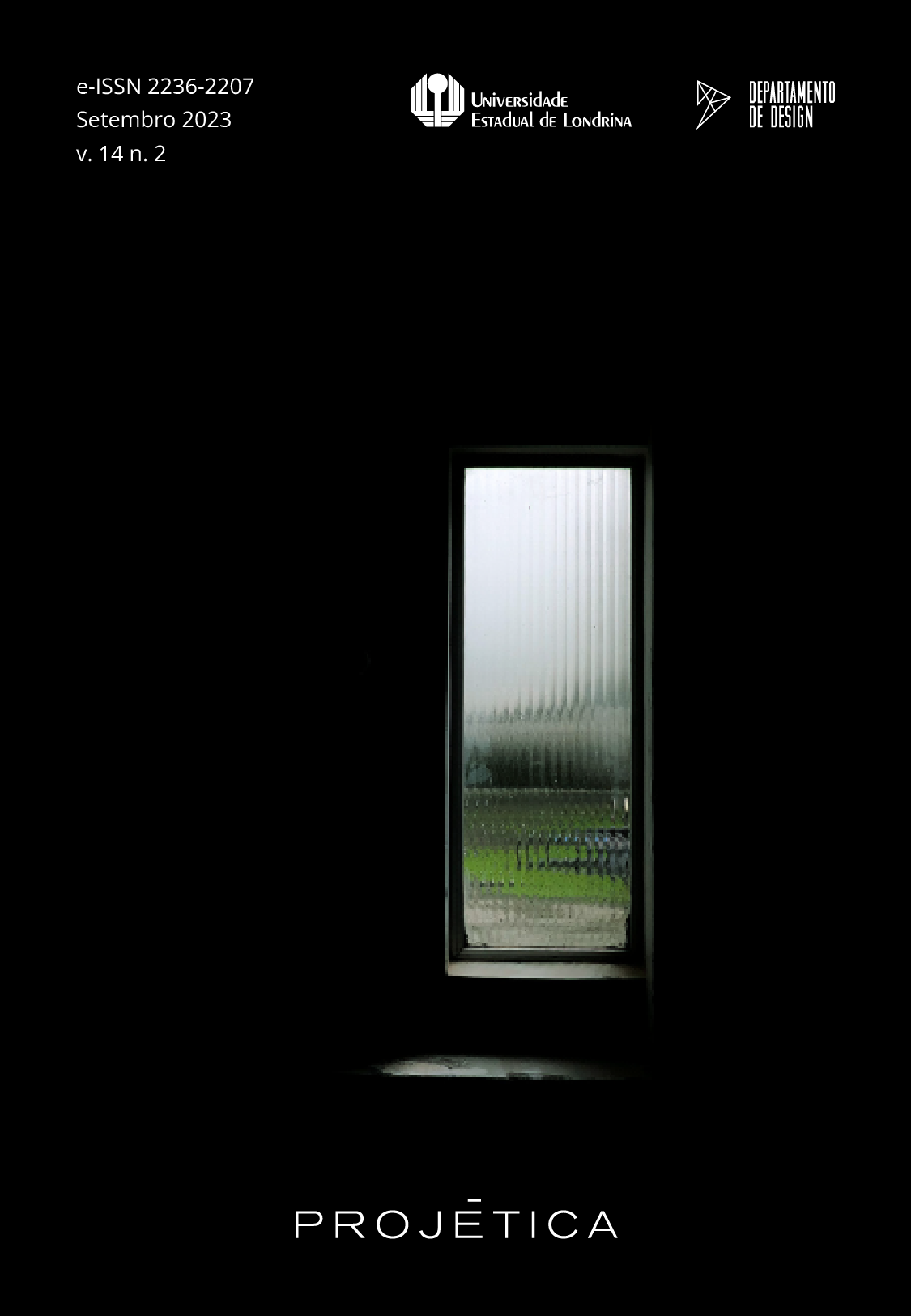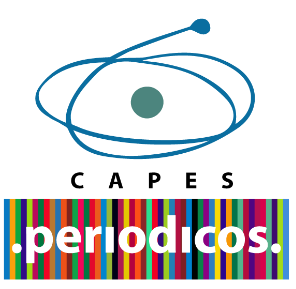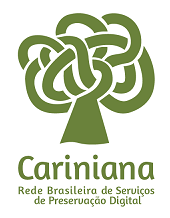Criatividade em design de moda
Análise quantitativa das publicações internacionais
DOI:
https://doi.org/10.5433/2236-2207.2023.v14.n2.41328Palabras clave:
Criatividade, Design, Moda, AnáliseResumen
Este estudo quantitativo analisou 23 artigos sobre criatividade em design de moda selecionados nos periódicos do portal Scielo, Wiley e ScienceDirect a partir das palavras-chave creative design fashion, publicados entre 2012 e 2019. Os resultados apontaram maior publicação em 2012, com predomínio de autoria de instituições argentinas e de publicação em periódicos britânicos da área das Ciências Sociais. Conclui-se que mais estudos são necessários sobre os fatores que influenciam a criatividade em design de moda.Descargas
Citas
AMABILE, Teresa; CONTI, Regina; COON, Jeffrey; HERRON, Michael. Assessing the work environmental for creativity. Academy of Management Journal, Briarcliff Manor, v. 39, n. 5, p. 1154- 1184, 1996.
ARAÚJO, Cintia Cristina Silva; MODOLO, Daniela; CARNEIRO JUNIOR, Erivaldo; VILS, Leonardo. Análise da relação entre clima organizacional e o desempenho criativo em organizações brasileiras. NAVUS-Revista de Gestão e Tecnologia, Florianópolis, v. 7, n. 2, p. 97-112, 2017.
ASSOCIAÇÃO BRASILEIRA DA INDÚSTRIA TÊXTIL E DE CONFECÇÃO - ABIT. Dados gerais do setor referentes a 2019 (atualizados em dezembro de 2020). São Paulo, SP: ABIT, 2021. Disponível em: https://www.abit.org.br/cont/perfil-do-setor. Acesso em: 6 mar. 2021.
BAER, John. Creativity doesn't develop in a vacuum. New Directions for Child and Adolescent Development, New York, n. 151, p. 9-20, 2016.
BEDANI, Marcelo. O impacto dos valores organizacionais na percepção de estímulos e barreiras à criatividade no ambiente de trabalho. RAM - Revista de Administração Mackenzie, São Paulo, v. 13, n. 3, p. 150-176, 2012.
BEGHETTO, Ronald; KAUFMAN, James. Classroom contexts for creativity. High Ability Studies, London, v. 25, n. 1, p. 53-69, 2014.
BLACK, Catherine; FREEMAN, Charles; STUMPO, Gordon. Conceptual model and strategies for creative thinking in apparel design. International Journal of Fashion Design, Technology and Education, London, v. 8, n. 2, p. 131-138, 2015.
CSIKSZENTMIHALYI, Mihaly. Implications of a systems perspective for the study of creativity. In: STERBERG, Robert (ed.). Handbook of creativity. Cambridge: Cambridge University Press, 2005. p. 313-335.
DAVIES, Dan; JINDAL-SNAPE, Divya; COLLIER, Chris; DIGBY, Rebecca; HAY, Penny; HOWE, Alan. Creative 25 learning environments in education: a systematic literature review. Thinking Skills and Creativity, London, v. 8, p. 80-91, 2013.
GARDNER, Howard. Creativity: An interdisciplinary perspective. Creativity Research Journal, London, v. 1, n. 1, p. 8-26, 1988.
GUEDES, Irina Lopes; MERINO, Giselle Schmidt Alves Díaz; MERINO, Eugenio Andrés Díaz; GOMEZ, Luiz Salomão Ribas. Inovação em Design de Moda: uma revisão bibliométrica da literatura. In: CONGRESSO BRASILEIRO DE PESQUISA E DESENVOLVIMENTO EM DESIGN, 12., 2016, Belo Horizonte, MG. Anais eletrônicos [...]. São Paulo, SP: Blucher, Disponível em: http://pdf.blucher.com.br.s3-sa-east-1.amazonaws.com/designprocee dings/ped2016/0013.pdf. Acesso em: 10 jun. 2020.
GUILFORD, Joy Paul. Measurement and creativity. Theory into Practice, London, v. 5, n. 4, p. 185-189, 1966.
HOWES, Christine.; HEALEY, Patrick G. T.; PANZARASA, Pietro; HILLS, Thomas. Ideas in dialogue: the effects of interaction on creative problem solving. In: ANNUAL MEETING OF THE COGNITIVE SCIENCE SOCIETY, 37., 2015, Pasadena, CA. Proceedings […]. Pasadena: Conference of the Cognitive Science Society, 2015. p. 1-7. Disponível em: https://www.researchgate.net/publication/280085363_Ideas_in_Dialogue_The_Effects_of_Interaction_on_Creative_Problem_Solving. Acesso em: 27 fev. 2021.
KIM, Kyung Hee. Meta-analyses of the relationship of creative achievement to both IQ and divergent thinking test scores. Journal of Creative Behavior, Hoboken, v. 42, n. 2, p. 106-30, 2008.
KRATZ, Lucia. O processo criativo para o designer de moda. Estudos em Design, Rio de Janeiro, v. 24, n. 1, p. 169-196, 2016.
LU, Chia-Chen. Interactive effects of environmental experience and innovative cognitive style on student creativity in product design. International Journal of Technology and Design Education, Berlin, v. 27, n. 4, p. 577-594, 2017.
MARTISEN, Øyvind. The creative personality: a synthesis and development of the creative person profile. Creativity Research Journal, London, v. 23, n. 3, p. 185-202, 2011.
MUNDIM, Maria Célia Bruno; MILIAN, Queila Guise; GUMS, Eliezer Fernandes; WECHSLER, Solange Muglia; DAMASCENO, Yung Sun Lee. Avaliação da criatividade em universitários. Revista Psicopedagogia, São Paulo, SP, v. 31, n. 94, p. 35-43, 2014.
MUNDIM, Maria Célia Bruno; WECHSLER, Solange Muglia. Estilos de pensar e criar em gerentes organizacionais e subordinados. Boletim de Psicologia, São Paulo, SP, v. 57, n. 126, p. 15-32, 2007.
NEVES-PEREIRA, Mônica Souza; ALENCAR, Eunice Maria Lima Soriano. A Educação no século XXI e o seu papel na promoção da criatividade. Psicologia e Educação, São Paulo, SP, v. 1, p. 3-11, 2018.
PULS, Lourdes Maria; ROSA, Lucas da; BEIRÃO FILHO, José Alfredo. A criatividade para o desenvolvimento de produto inovador de moda. Projetica, Londrina, PR, v. 6, n. 2, p. 144-157, 2015.
REITER-PALMON, Roni; FORTHMANN, Boris; BARBOT, Baptiste. Scoring divergent thinking tests: a review and systematic framework. Psychology of Aesthetics, Creativity, and the Arts, Washington, v. 13, n. 2, p. 144-52, 2019.
RITTER, Simone M.; DIJKSTERHUIS, Ap. Creativity - the unconscious foundations of the incubation period. Frontiers in Human Neuroscience, London, v. 8, p. 1-10, 2014. Disponível em: https://pdfs.semanticscholar.org/6254/d41453ff2d67c3be20ddde101291d1dbc9ae.pdf?_ga=2.250143046.1183937078.1614631430-1046367692.1614631430. Acesso em: 27 fev. 2021.
ROBINSON, Joyce Robin; FREEBURG, Beth Winfrey; WORKMAN, Jane. Family environment and creativity in fashion design students. International Journal of Fashion Design, Technology and Education, London, v. 6, n. 3, p. 200-209, 2013.
ROBINSON, Joyce Robin; WORKMAN, Jane E.; FREEBURG, Beth Winfrey. Creativity and tolerance of ambiguity in fashion design students. International Journal of Fashion Design, Technology and Education, London, v. 12, n. 1, p. 96-104, 2019.
RUNCO, Mark. Creativity: theories and themes: research, development, and practice. California: Elsevier, 2014.
SARKAR, Prabir; CHAKRABARTI, Amaresh. Assessing design creativity. Design Studies, Amsterdam, v. 32, n. 4, p. 348-383, 2011.
STEINDORF, Lena; HAMMERTON, Holly A.; RUMMEL, Jan. Mind wandering outside the box - about the role of off-task thoughts and their assessment during creative incubation. Psychology of Aesthetics, Creativity, and the Arts, Washington, p. 1-41, Nov. 2020. DOI: https://doi.org/10.1037/aca0000373. Disponível em: https://www.researchgate.net/publication/346584964_Mind_wandering_outside_the_box_-_About_the_role_of_off-task_thoughts_and_their_assessment_during_creative_incubation. Acesso em: 27 fev. 2021.
Descargas
Publicado
Cómo citar
Número
Sección
Licencia
Derechos de autor 2021 Projetica

Esta obra está bajo una licencia internacional Creative Commons Atribución 4.0.
Projética está licenciada sob a Creative Commons Attribution CC-BY 4.0 International. Os autores detém os direitos autorais e concedem à revista o direito de exclusividade de primeira publicação.
Os autores dos trabalhos aprovados autorizam Projética a, após a publicação, ceder seu conteúdo para reprodução em indexadores de conteúdo, bibliotecas virtuais e similares.
Os autores assumem que os textos submetidos à publicação são de sua criação original, responsabilizando-se inteiramente por seu conteúdo em caso de eventual impugnação por parte de terceiros. As opiniões emitidas pelos autores dos artigos são de sua exclusiva responsabilidade.
A revista se reserva o direito de efetuar, nos originais, alterações de ordem normativa, ortográfica e gramatical, com vistas a manter o padrão culto da língua e a credibilidade do veículo. Respeitará, no entanto, o estilo de escrever dos autores. Alterações, correções ou sugestões de ordem conceitual serão encaminhadas aos autores, quando necessário. Nesses casos, os artigos, depois de adequados, deverão ser submetidos a nova apreciação. As provas finais não serão encaminhadas aos autores.











